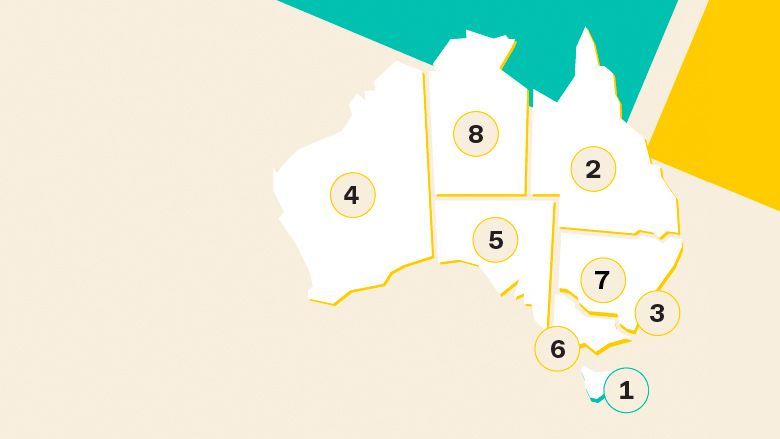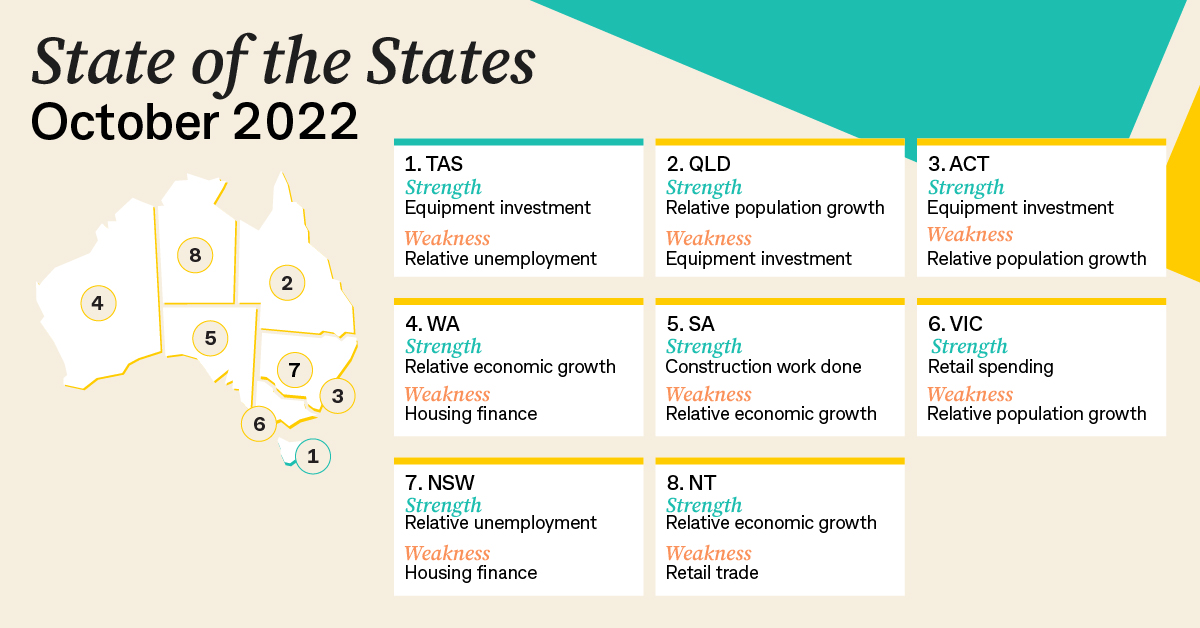The second-place ranking for Queensland is its best ever ranking, topping the equal third position recorded almost nine years ago (January 2014). Although Victoria has slipped to number six, it remains top-ranked on retail spending.
The CommSec State of the States report uses the latest available information to provide an economic snapshot of each region by comparing annual growth rates for eight key indicators including: economic growth; retail spending; equipment investment; unemployment, construction work done; population growth; housing finance and dwelling commencements.
Speaking about the report, CommSec Chief Economist Craig James said there was now an orderly ranking of the country’s state and territory economies.
“Tasmania has quickly returned to the top of the economic leader board, courtesy of consistently high rankings for the eight economic indicators,” Mr James said.
“Queensland is also a stand-out – its best overall ranking. And the ACT impressively leads the economic rankings on three of the eight economic indicators.
“When looking at annual growth to get a guide on economic momentum, Queensland had annual growth rates that exceeded the national average on five of the eight indicators.
“In terms of future economic performance, much will depend on how economies respond to a period of rising interest rates.”


